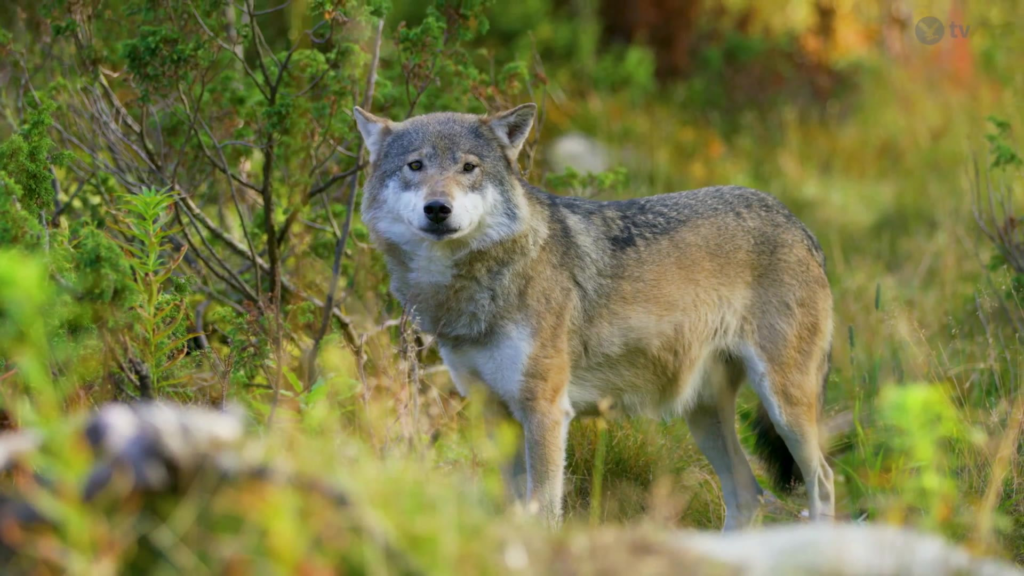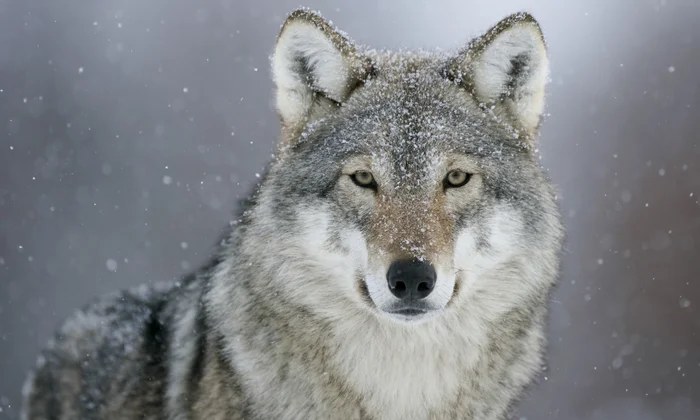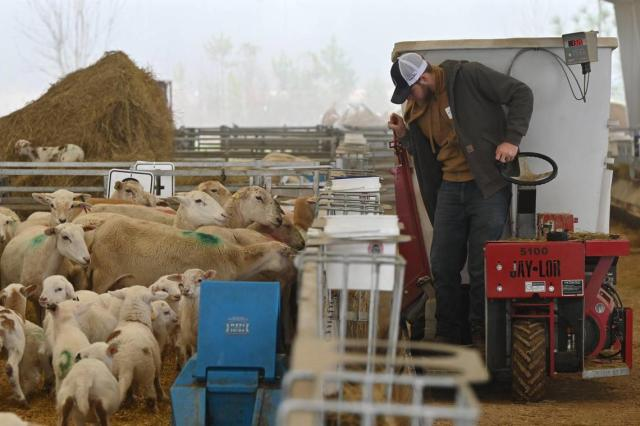The idea of reintroducing wolves to the Scottish Highlands has gained significant attention following a groundbreaking study by researchers at the University of Leeds. According to the study, the return of grey wolves to areas such as the Cairngorms, as well as the south-west, north-west, and central Highlands, could have a profound impact on both biodiversity and the UK’s carbon reduction targets.
By curbing the unchecked growth of red deer populations, wolves could facilitate natural woodland regeneration, ultimately leading to increased carbon sequestration. Although the concept remains controversial, particularly among farmers, the study suggests that this ecological intervention could be a game-changer in the UK’s fight against climate change.
The Ecological Role of Wolves in Controlling Red Deer Populations
The Scottish Highlands are currently home to an estimated two million red deer, a dramatic increase from approximately 450,000 in the 1960s.
The absence of natural predators such as wolves has allowed deer populations to expand unchecked, leading to severe overgrazing. This, in turn, has hindered the natural regeneration of native woodlands, as young saplings are continuously consumed by deer.
Wolves, as apex predators, would naturally regulate red deer numbers by preying on weaker and older individuals, reducing overall population size.
According to the study, a population of around 167 wolves would be sufficient to restore balance, allowing forests to recover without the need for human intervention. This would lead to a cascade of ecological benefits, including improved biodiversity, healthier ecosystems, and increased carbon storage capacity in expanding forests.
Read : 20 Feral Pigs Illegally Released into Cairngorms National Park
In addition to controlling deer populations, the presence of wolves could indirectly benefit other species. For example, a reduction in deer numbers could lead to an increase in shrubbery and undergrowth, providing habitats for small mammals, birds, and insects.
Read : Huge Explosion with Massive Blast Breaks Out at Industrial Estate in Scotland: Watch Video
This would restore a more balanced and resilient ecosystem in the Scottish Highlands, reminiscent of what existed centuries ago before human-driven eradication of large predators.
Carbon Sequestration and Climate Benefits
One of the most significant findings of the study is the potential contribution of wolves to the UK’s climate goals. The expansion of native woodlands facilitated by controlled deer populations could result in the sequestration of approximately one million tons of carbon dioxide annually.
This accounts for around five percent of the UK’s total carbon removal target for woodlands, making it a substantial contribution to national climate efforts.
The researchers also estimated that each individual wolf could contribute to an annual carbon uptake capability of 6,080 tonnes of CO2.

Using standard carbon valuation methods, this would make each wolf ‘worth’ an estimated £154,000 in terms of climate benefits alone. Such calculations highlight the economic rationale for reintroducing wolves, beyond just ecological and conservation-based arguments.
Moreover, allowing forests to regenerate naturally would be a cost-effective alternative to expensive tree-planting initiatives. Instead of investing heavily in artificial afforestation projects, policymakers could achieve similar, if not greater, carbon capture benefits by simply restoring the natural predator-prey balance.
This aligns with the broader global movement towards nature-based climate solutions, which advocate for leveraging natural processes to combat climate change.
Challenges and Controversies Surrounding Wolf Reintroduction
Despite the compelling scientific case for wolf reintroduction, the proposal is not without its challenges. One of the primary concerns comes from farmers and rural communities, who fear that wolves may pose a threat to livestock.
The potential for wolves to prey on sheep and cattle is a major point of contention, and lessons from other European countries show that coexistence strategies would need to be carefully developed.
In countries such as France and Germany, where wolf populations have been recovering, there have been increasing conflicts between farmers and conservationists.
To mitigate these issues, various measures such as livestock guardian dogs, reinforced fencing, and compensation schemes for farmers have been implemented. If the UK were to proceed with reintroducing wolves, similar strategies would need to be put in place to ensure minimal disruption to rural livelihoods.

Another concern is public perception and fear of wolves. Many people associate wolves with danger due to centuries of folklore and misinformation. However, scientific research consistently shows that wolves pose minimal risk to humans, preferring to avoid human settlements.
Public education campaigns and engagement with local communities would be essential to overcoming these fears and fostering acceptance of wolf reintroduction.
Additionally, logistical and regulatory hurdles would need to be addressed before any reintroduction effort could be undertaken. Legal frameworks regarding species protection, land use rights, and wildlife management would all need careful consideration.
Furthermore, as the study’s co-author Lee Schofield pointed out, substantial and wide-ranging stakeholder engagement would be crucial before any plans could be implemented.
A Global Perspective on Wolf Reintroduction
Reintroducing wolves to Scotland would not be an isolated experiment; rather, it would follow a precedent set by other successful wolf restoration programs worldwide. The most famous example is the reintroduction of grey wolves to Yellowstone National Park in the United States during the 1990s.
Since then, the Yellowstone ecosystem has experienced significant improvements in biodiversity, with tree and plant populations rebounding due to reduced elk overgrazing. This has had cascading effects, benefiting species such as beavers, songbirds, and even fish populations.

Similarly, in parts of Europe, wolves have naturally recolonized areas where they were once extinct, with positive ecological impacts. Countries such as Spain, Italy, and Poland have demonstrated that wolves can coexist with human populations if proper management strategies are in place. These examples provide valuable insights that could be applied to Scotland should a reintroduction program move forward.
The Future of Wolves in Scotland
The findings of the University of Leeds study add to the growing discourse on rewilding as a means of tackling climate change and restoring ecosystems. With increasing recognition that biodiversity loss and climate change are interconnected crises, there is a need for innovative solutions that address both challenges simultaneously.
While the idea of bringing back wolves may be met with skepticism in some quarters, it is essential to consider the long-term benefits of such a move. The restoration of natural predator-prey dynamics could unlock significant ecological and climate-related advantages that would otherwise require costly human intervention.
Ultimately, whether or not wolves will return to Scotland remains an open question. Policymakers, scientists, and local communities will need to engage in meaningful discussions to weigh the benefits against the concerns.
However, as the climate crisis continues to escalate, nature-based solutions such as wolf reintroduction may offer a promising pathway toward a more sustainable and biodiverse future for the UK.
let’s enjoy few years on earth with peace and happiness….✍🏼🙏

